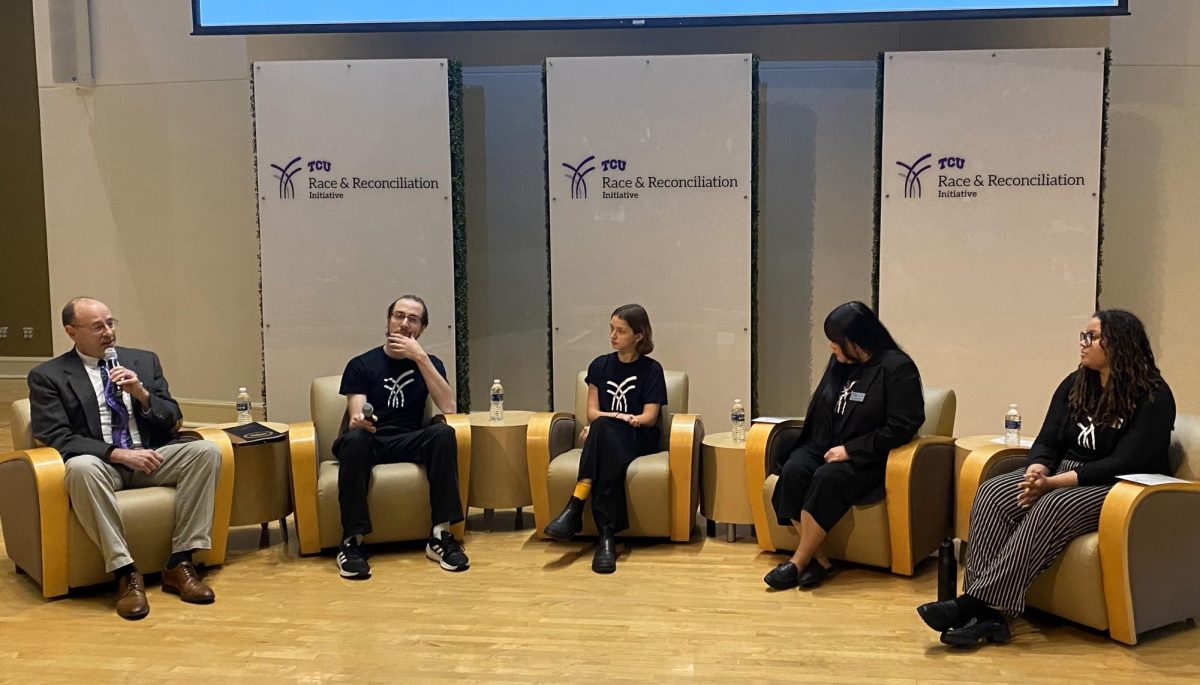Most TCU students do not get the chance to study abroad in Japan. But thanks to the School for Classical & Contemporary Dance and Fort Worth Sister Cities, students can experience a piece of Japanese culture here on campus.
Instructors from the Fujima Dance School in Nagaoka, Japan, will teach students at the School for Dance how to perform two traditional Japanese dances and lecture on the importance of dance in Japanese history and culture next week, said Ellen Page Shelton, chair of the School for Classical & Contemporary Dance.
The visiting teachers will lead additional dance demonstrations at 7 p.m. Monday and next Friday.
Students will showcase the new dances they have learned in an informal performance at noon Friday in Studio B of the Ballet and Modern Dance Building. Shelton said she first became acquainted with Fujima Dance School when she and other School for Dance members visited Nagaoka during spring 2006 as part of a Fort Worth Sister Cities exchange. The group took a dance class with Yoshi Kawa, owner of the Fujima school. Shelton said she invited Kawa to the U.S. to teach dance members that didn’t make the Japan trip.
“She doesn’t like to travel, so she’s been kind of dragging her feet,” Shelton said, “But we finally got her to come.”
Stylistically, Shelton said, the traditional modes of Japanese and American dancing are “night and day.”
One difference is in the costuming. School for Dance students will wear informal cotton kimonos called yukatas to perform the traditional Japanese dances instead of the leotards and tights they are used to wearing, Shelton said. Elaine Yamagata, a Fort Worth resident, supplied the yukatas, she said.
“When you put it on, it restricts movement in certain ways, but it also has these long sleeves that they use as part of the gestural material,” Shelton said.
Kirsten Cather, an assistant professor who teaches Japanese literature and film at the University of Texas at Austin, said the fact that students will be wearing yukatas may mean that they will learn a dance connected with Japanese festival culture.
“My assumption is that it’s somewhat more of a plebian dance that people would have done as part of festivals,” Cather said. “All festivals would have a kind of dance component.”
Shelton said although Japanese and Western dance traditions are different in terms of technique, she sees some thematic similarities between the two, especially in their uses of gesturing to tell a story.
“Certain gestures mean certain things in ballet,” Shelton said. “It’s a very culture-specific dance that has some of the same traditions as far as the movement itself, but it’s very, very different from what our students do normally.”
According to “The Japanese Dance” by Marcelle Azra Hincks, dance has played an important role in Japan’s cultural history. Thirteenth century Buddhist priests used dance, along with landscape gardening and the tea ceremony, to help polish Japan’s ruling military class at the time, she wrote.
Shelton said studying Japanese traditional dance gives students an opportunity to think about what makes some art forms last longer than others.
“The generation of dancers that are here now are going to leave some sort of legacy for the future,” she said. “The Japanese form is one that has been around for quite a long time. It encourages critical thinking about the communication of dance across cultures, what impact one can have.”




